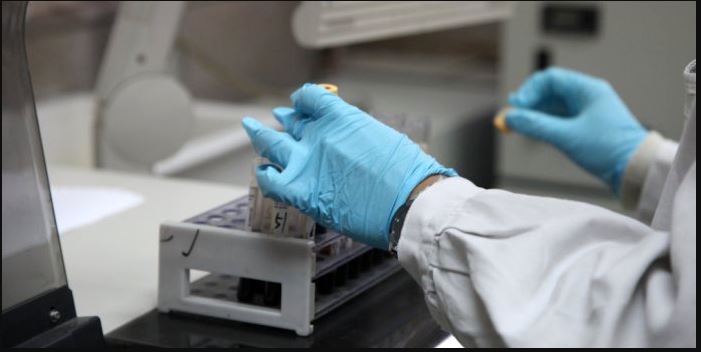
Rwanda Biomedical Center (RBC) says that this year, the number of tuberculosis cases increased from 5,538 to 9,417 across the country. This means 3879 new tuberculosis cases were registered in 2022/2023 compared to 2021/22.
Tuberculosis is a communicable contagious bacterial illness that mostly affects the lungs. It is a major source of morbidity and death, with the majority of these deaths preventable by early diagnosis and appropriate treatment.
This year’s figures indicate that most affected people are found in the Eastern province with 3713, City of Kigali has 2239 tuberculosis cases, Southern Province 1682, Western province 1114, while the Northern province has fewer numbers with 669 cases.
According to RBC figures, males were more affected compared to females. The number of males affected by tuberculosis is three times bigger than females. Males were 7345, representing 78% compared to females who were 2072 representing 22%.
Some people said, though they heard about tuberculosis disease, several people continue to mistakenly take it for poison.
“I was infected with tuberculosis; I did not immediately understand the sickness. I visited traditional healers and I didn’t recover from the illness. I started praying, nothing changed but the condition became intense. I thought it was witchcraft, I did not know it could have been tuberculosis. I was coughing too much, the dry cough,” Agnes Uwimana, a resident of Ntarama sector, Bugesera district said.
“I tried everything that I thought would heal me, but I failed. Finally, I went to the hospital, and after the diagnosis they told me that I had tuberculosis infections,” she added.
According to the World Health Organisation (WHO), tuberculosis (TB) is one of the top ten causes of death worldwide, and it is the leading cause of death caused by a single infectious agent. However, most of these deaths might be avoided with early detection and treatment.
Dr. Byiringiro Rusisiro, the Director of the TB infection control unit at RBC said that studies indicated that some people visit traditional healers and witchcraft doctors, after mistakenly failing to identify the disease.
“Figures indicate that some people mistakenly called the disease witchcraft disease, and visited traditional healers. This is a waste of time, and patients delay getting medication from professional doctors,” Dr Rusisiro said.
He pointed out that during the latest research 2% of the female patients admitted visiting traditional healers seeking treatment, and 4.1% were males.
Who is at risk?
Tuberculosis primarily affects individuals in their prime working years, according to the World Health Organisation. All age groups, however, are at risk. More than 80% of illnesses and fatalities occur in low- and middle-income nations.
HIV-infected people are 16 times more likely to acquire active TB, and the risk of active TB is also higher in those who have other illnesses that impair the immune system. People who are malnourished are three times more vulnerable. Undernutrition was responsible for 2.2 million additional TB infections worldwide in 2021.
Alcoholism and tobacco use both raise the risk of tuberculosis. In 2021, alcohol use disorder was responsible for 0.74 million new TB cases worldwide, while smoking was responsible for 0.69 million.
Cough with sputum and blood at times, chest pains, weakness, weight loss, fever, and night sweats are all common signs of active lung TB. Rapid molecular diagnostic tests, which have excellent diagnostic accuracy and will lead to significant advances in the early diagnosis of TB and drug-resistant TB, are recommended by the WHO as the initial diagnostic test in all patients with signs and symptoms of TB.
WHO recommends the Xpert MTB/RIF Ultra and Truenat assays as rapid tests.
Diagnosis of multidrug-resistant and other resistant types of tuberculosis, as well as HIV-associated tuberculosis, can be difficult and costly.
Scientists say tuberculosis is very difficult to detect in young people because collecting sputum specimens from newborns and children is difficult.

